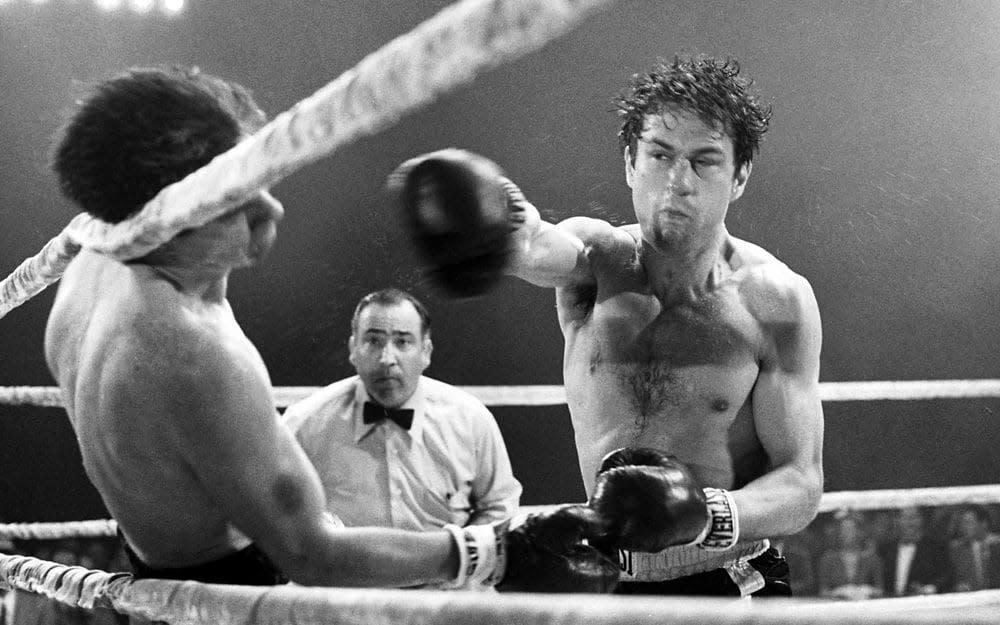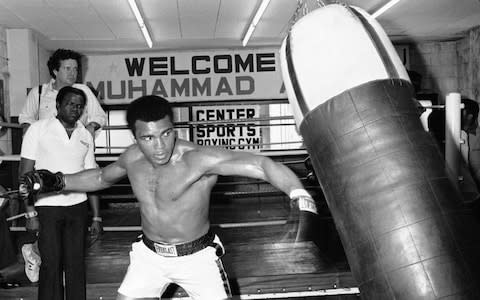How to improve your punch power

One of the major elements of the art of pugilism is a boxer’s punching power. We’ve all tested our might on those drop down arcade punch machines. But to what extent is punch power a natural ability? And how far - if at all - can we enhance our natural ability through sports specific training?
I’ve joined forces with world kickboxing champion Darren Richardson to develop a workout that will result in a devastating increase in the power behind your punch (just make sure you use it in the safe environment of the gym, and not irresponsibly out on the streets).
How to calculate power
Power is calcuated as Velocity x Strength, so the goal for our project is to get you moving faster and with more force.
Step 1: Understand the biomechanics of a strong punch
When throwing a punch you need to be mindful of transferring as much of your body mass into the shot as possible. The more mass you can channel into the punch, the more force it will carry.
Weight classes exist in boxing for exactly this reason. The sanctioned system keeps fighters safe; a heavyweight can generate far more force than a lightweight of equal athletic ability based purely on the equation above.
The punch starts from the floor, so you need to have a strong stance to act as the base. When you put a punch into motion, energy is transferred from the floor, through the legs, into the glutes, and up into the core and back muscles. It then travels through the shoulders and triceps before finally being delivered into the fist and knuckles via a rotational and pushing movement pattern.
Technique is crucial here: there's point in having the strongest arms in the world if you can't effectively transfer energy from the floor to your fingertips. For an explanation of correct punching technique, see the first three minutes of the video above.
Step 2: Strength Training

Mention punch power and people tend to call to mind big, bulging biceps and triceps. However, the arm and shoulder only account for around 10pc of the power behind a punch. Instead, the vast majority of power comes from the lower and posterior chain of muscles. We're talking about the back, glutes, and hamstrings here.
Concentrate on the below exercises in your gym training and you'll maximise the speed of that all-important energy flow from the ground to you knuckles:
Deadlifts – Good for the glutes, hamstrings, and core. They also provide structural integrity to the shoulder.
Front Squats – These strengthen the quads, hamstrings, glutes, thoracic extensors (back) and overall structural integrity of the athlete.
Cable Rotations – An exercise that strengthens the core and rotational muscles associated with the spine, hips and pelvis.
Step 3: Plyometric Training
Being strong doesn’t necessarily mean being able to punch hard - remember that we need strength and velocity to really punch with venom.
To efficiently employ your newfound strength from the above exercises, we need to apply speed to the movement pattern. The aim here is to teach the central nervous system to recruit fast twitch muscle fibres, which are the bits of your muscle that produce explosive power over a short period of time.
This is where plyometrics come in. Plyometrics take strength exercises and add speed and explosive energy into the mix. They train your body to work at its maximum level of output in short and sharp movements.
Power Cleans
Plyometric Rotations
Jump Squats
And that's it. The punch is a complex movement, but by following the above three steps, over time you should be able to significantly improve the force of your thumps.
Scott Laidler is a film industry personal trainer from London. Visit Scott at www.scottlaidler.com for online personal training and free fitness resource

